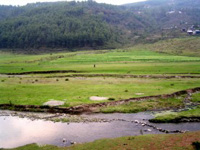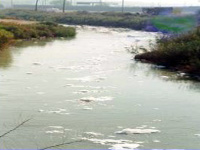The Hindu Kush-Himalayan region - Pressures and Impacts (2/2)
Water has been and will remain a contentious issue in the Hindu Kush-Himalayan region; it is one of the region's most important natural resources and is critical for the survival. Concerns about water include both quantity and quality of the resource and relate directly to human health standards. An adequate supply of drinking water alone does not fulfil human health needs, as its quality refers to the suitability of the water to sustain living organisms and other uses such as bathing, washing, irrigation, and industrial use. Water pollution is a major and increasing problem in the HKH region with water-borne diseases (notably diarrhoea) accounting for 16.5 % of all deaths (Metcalf and Eddy, 2000) The intense pressure on water resources in the HKH region is due to several factors:
- Population growth of typically two per cent per annum
- Urbanisation caused by natural growth and migration
- Industrialisation, e. g., through carpet production
- Irrigation for agriculture
- Increased demand for electricity leading to more hydropower generation
 | River damming (driver) for water extraction lead to change in flow velocity (pressure) thus to modification of the composition of the riverbed substrata and accumulation of nutrients in front of the dam (impact). As a consequence the composition of aquatic macroinvertebrate assemblages will change. Photo: S. Sharma. |
 | Domestic sewage effluents predominately lead to eutrophication of rivers and, thus, to oxygen depletion. Consequently poisonous by-products occur. Only a few or none fish and aquatic macroinvertebrate taxa will be found in this river. |